General information about Namibia

Namibia offers an abundance of sightseeings to all those who are interested in this country. Apart from the impressive landscape, there also are some unique kinds of plants and animals, a changeful history with some hopeful perspectives as also exotic and lovely persons. Additionally, Namibia offers a climate that is also pleasant for central Europeans.
Geography and history
Namibia, the country that mainly consists on deserts, is located at the south-west of Africa at the Atlantic coast. Bordering with Angola at the north, South Africa at the south and Botswana at the east, with a surface exceeding 825.000 km², it is approximately double as big as Germany. Namibia is a sparesely populated state with only approximately 1,8 million inhabitants.
Namibia got its name after the independence of the Namib desert, the oldest desert of the world that extends as a strip of a width between 50 and 140 km alongside the Atlantic; With an average rainfall of only 20 mm per year, it is also considered as one of the driest deserts.
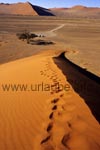
The second big dry area of Namibia is the Kalahari, a semi desert in the east of the country. Kalahari further extens over some big areas of Botswana and South Africa. In the centre of Namibia, the central plateau is located with an average height of 1000 to 2000 metres. The north and the north-east with the Caprivi strip that extents up to the Okawango-delta are the most densely populated and less dry areas.
The earliest inhabitants of Namibia are the San (bushmen) and the Damara. Bit by bit, the other people immigrated, thus different tribes of Bantu, Namas and Hereros. At the end of the 15th century, the first white Portugesian sailors arrived. But this barren country seemed not to be very attractive to them and up to the year 1723, when the Dutch came in order to look for resources, no further white people came to this country. Then, bit by bit, the missionaries discovered the country and tried to convert the population.
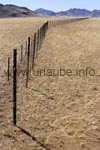
At the end of the 19th century when Germany started to get some more colonies, the former South Africa came under German "protectorate". One of the most dark chapters of this engagement is the defeat of the Herero revolution of the year 1904, in which these people were almost eradicated.
But the german dominance was not for a long time, as after the defeat of the 1. world war, Germany lost its colonies. South-west Africa came then under the south African administration; As it was also the case in South Africa, the apartheid was introduced and a strict separation of races took place. In the year 1960, the liberation movement SWAPO started under the guidance of Sam Nujoma. A long bush war followed until in the year 1990, the country finally achieved independence under the name Namibia .
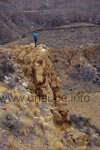
Namibia, such a poor country at first sight, has some good economical chances. One of the main supports of the economy is the tourism that increasingly booms. Specially for German people, this country is very interesting, of course due to the sightseeings of the landscape and the fauna but also due to the past and the abundance of German relicts.
The coal mining with copper and uranium deposits as also some big diamond fields are another resource of the Namibian economy. There are some respectable gas deposits in front of the coast with which Namibia intents to be the biggest gas exporter of the world.
Provided the peaceful route and the relatively unproblematic cooperation of the different black and white population groups continue, Namibia will continue being one of the countries with the strongest economies of Africa.
Climate and travel time
Namibia is a desert state with a very dry climate, whereby the temperatures are rather moderated. As the country is located at the southern hemisphere, the seasons are opposed to the German ones.
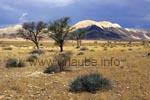
The north of Namibia is more humid and warmer, and, compared to the south, it has a rather tropical climate. The south is rather subtropical, whereby rain is absolutely an exception throughout the country. In the Namib desert, the oldest of the world, it only rains any ten years. Besides, there are two rainy seasons, in the months November/December and February/March each. In contrast to many other tropical areas, in namibia, the rainy season does not mean at all that it permanently rains every day. There are rather sporadic showers, mainly in distances of a couple of days, but with an imposing intensity. Most of the times, the local storms are originated in the late afternoons and erupt in some extreme showers and covert the otherwise dry course of the river in rushing torrents within seconds. Then, the streets are many times impassable.
In our journey we made in the month of February, about every two days, we could experience a gathering storm with some dreamy moods of light. Even though we did not get into the centre of the storm showers, we could recognize the power of this rain by looking at the rinsed grooves of the street. Due to this reason, one has to include sufficient time reserves in the travel planning, as it can happen very soon that a street gets impassable and/or that it can be only driven very slowly on it or that it takes one or two hours until it is possible again to cross a river. But it is also possible that for some years, there is no rain at all.
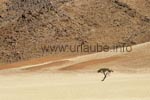
In contrast to this changeable weather, during the winter months in Namibia , daily sunshine with a permanent dryness is guaranteed. Both things are attractive, but the travel time one chooses will depend from different factors.
What is not recommendable at all is to make a tour during the months December and January, when the whole country is moaning about the heat. February is still very hot and the night does not provide enough cooling-down, but the temperatures are already bearable. The months April/May and September/October, thus, autumn and spring time are considered as the best travelling time; Either during the day as also in the nights the temperatures are pleasant. In Namibia, the winter is very dry, sunny and during the day mostly in the range between 23 and 28 degrees. But in the night, it gets very cold and even night frost is not unusual. Thus, during this time of travelling, one should not miss to take a jumper and long trousers.
For us central Europeans, it is unusual that the sun goes down relatively early, even during the Namibian summer, the sun shines from about 06.00 a.m. up to approximately 08.00 p.m., and there is practically no dawn. In the winter, there is daylight for approximately 11 hours - from about 7.00 a.m. up to 06.00 p.m. This should be also considered in the planning of the trip, as a tour in the dark on the unpaved and sandy roads is not recommendable.
The inhabitants of Namibia
The actual population of Namibia are the bushmen or San, who live in the south of Africa since thousands of years. Today, they have their last domiciles in the east of Namibia and in Botswana. The bushmen are small with relatively fair skin and a rather Asian appearance.
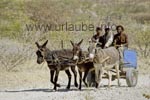
The Damara also live since long ago in the country, a negroid ethnic group. Traditionally, they were hunters and collectors, but they already handled the melting of iron and copper. In the year 1973, an area of the north west of Namibia was assigned to this ethnic group and renamed to the country of Damara. But today, many Damara live in the urban centres, many times as employees, public officers or teachers.
The Nama belong to those ethnic groups that arrived relatively late to Namibia. They belong to the Khoi-tribes that came in the 19th century from the Kap-colony of South Africa. The Nama are subdivided into different clans of which the most known are the ones from Jonker Afrikaner and Hendrik Witbooi. Hendrik Witbooi became specially famous by the fight against the German colonial power. The Nama mainly live in the south of the country.
Some hundred years ago, the Herero came to Namibia, a Bantu nation of cowmen. As the Nama were also cowmen, there were many disputes between both groups that also had an effect on the fight against the Germans, as this old hostility hindered the Nama to prepare a revolution together with the Herero. By this way, in the year 1904, first the Herero and then the Nama were defeated by the german colonial groups and almost completely destroyed.
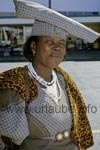
After some oral traditions, the Herero came from the lakes in east Africa. First, they lived in the Kaoko country, where still today the Himba live, a sub-group of the Hererro. But the biggest part of the Hereros went further to the south and the east, where they found their mother country in the centre of Namibia. Only a few thousand survived the Herero revolution of the year 1904. Today, there are again approximately 100.000 Herero. The typical colourful and high-necked dresses and caps of the Herero-women for which up to 12 m cloth is elaborated, were not originated earlier than in the Wilhelminian era. Before that, the women only wore a loincloth, as the Himba still do today. The wifes of the first German settlers were afraid of their husband's moral and introduced these strange clothings.
With approximately 700.000 people, the Ovambos are the biggest population group and represent almost half of the population of Namibia. They are tillers and cowmen who immigrated from the east African lakes and settled in the north around the year 1650. The Ovambos were the leaders of the independence war against the south Africans and are represented today by most of the administration officials and the elite of the country.
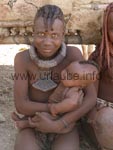
The Tswana live at the east, at the edge of the Kalahari, and are the smallest ethnical group with approximately 10.000 people.
The Rehoboth Baster are crossbreeds that resulted from the union of the white settlers with local woomen. As these "bastards" did not get the same rights as the white people but also did not consider themselves as the black population, they established their own settlements. In the year 1885, the board of the Baster decided to arrange a protection contract with the German Empire, so that the Baster-area around Rehoboth became a state within the state. After some seesaw changes and complications due to the political situation, the Baster gave definetely up their efforts for the independence and declared themselves as Namibian citzens without any protest.
Approximately 6% of the population of Namibia are white, therefrom, approximately 2% German speaking people. They have a sifnificant economical influence, as there are still a lot of farms and companies owned by white people. Fortunately, there were no big conflicts between the black and the white population until now, contrary to the case in some neighbour countries. According to the Namibian constitution, the compulsory expropriations are not intended, although the tone gets more harsh. We hope that Namibia continues its peaceful way in the cohabitation of the population groups.
The fauna of Namibia
Beside some fascinating landscapes and people of exotic appearance, the visitors of Africa of course want to see also some exotic animals. The desert state Namibia offers an impressive fauna, even though the rich animal kingdom strongly decreased during the last century. But in recent times, some great efforts are made in order to protect the wild animals and for many kinds, some landscape protection has been purposedely accomplished.
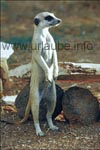
In the Etosha Park, one of the most renowed natural protected areas and deer parks of Namibia, one finds four of the "Big Five". With a little luck one can watch the lions, leopards, rhinocerus and elephants, only the buffalos are missing here. The park of course accommodates a lot of other kinds of animals, hippopotamus, hyaenas, ackals, warthogs, giraffes, antipoles and birds.
In some dry river beds of the south and north-west it is possible to come up to some desert elephants that adapted amazingly well to these extreme life conditions. The buffalos that are missing in the Etosha Park can be found in the m Caprivi strip and in the Okawango delta.
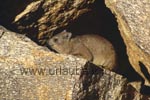
One can come across to some cheetahs with a relative frequence. This fastest mammal is oftenly confused with the leopard, but it looks differently and it also has a different way of life. Its tactic of hunting and the specialism often are a fate to itself, as it can only maintain the speed of approximately 100 km/h with which it hunts its prey only during a short time. Afterwards it is so exhausted that oftenly, some lions, leopards or hyaenas start to fight with it to get the prey and many times, it goes away empty-handed or is even killed, although the hunting was successful.
Specially in the south there are troops of meerkats bustling around. These cute small friends belong to the most sociable mammals that can be dressed almost as dogs. They live in many farms and lodges.
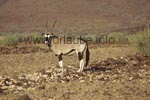
Warthogs are creatures of bizarre appearance that are quite able to defend themselves and to stand up to lions, but are also kept as "hotel mascots" showing here a peaceful attitude. The dassies, some animals living in big groups and of a weight of approximately 3-5 kg, and, curiously enough, are relatives of the biggest mammals, the elephant.
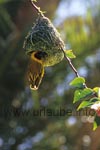
Monkeys are rare in Namibia where only two kinds exist, the chacma baboon and the vervet monkeys. Specially the vervet monkeys are detested by the farmers. Those who experienced an "attack" and have seen the devastation and the dirt that these monkeys leave after having visited a farm will understand this.
The giraffes are the "outstanding population" of Namibia in the true sense of the word and were evacuated again on some farms of the Kalahari. While the demara zebras are spread all over some big parts of Africa, the mountain zebras only exist in Namibia between the Namib desert and the central plateau. Springboks, wildebeests, red hartebeests and elands, koodoos and many other hoofed animals exist in more or less big herds. But the most impressive is the oryx antilope, the heraldic animal of Namibia. At the coast of the Atlantic, some big colonies of fur seals live. The apparently most renowed one is Cape Cross in the proximity of Swakopmund.
From the world of birds, the bayas with their impressive nests and partly real colonies, are apparently the most outstanding to the visitors. The tokos with their huge beaks, guinea fowls and, of course, ostrichs are more representants of the birds existing in Namibia. Of course, this listing is far form being complete, but this would go beyond the scope of this report.
The flora of Namibia
As the fauna, the flora of Namibia is marked by a large and diversified world of plants from which some are endemic and only exist in this country.
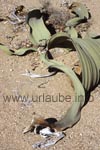
The most known is the welwitschia mirabilis, this strange desert plant that only exists in some very limited areas of Namibia. This plant belongs to the coned gymnosperms and gets up to 2000 years old. It has only two leafes up to a length of eight metres that are frazzled and split by the wind, so that the resulting appearance is of many leafes and a root that goes up to 3 m into depth. There are male and female plants that can be distinguished by their florescence.
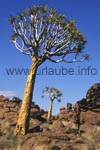
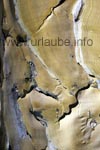
In the south of the country, there are some quiver trees that actually are not trees but aloes and get up to 8 metres high and 400 years old. From these branchs, the bushmen made their quivers, of which the name is originated. These plants have perfectly adapted to their surroundings, as in the short rain periods, the tree "collects" enough water in order to survive the dry periods. They are specially impressive during the winter semester when they blossom and their yellow florescence of up to 30 cm give the landscape a touch of colour.
The national tree of Namibia is the camel thorn that primarily exists in the south and provides some fruit in the winter, a kind of husk with a velvety skin that, once dried, results in very good clatters.
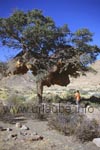
Due to the climate, the fauna is the most densely wooded in the north, specially in the relativly humid Caprivi strip, while in the south, the savannahs and desert areas dominate. The beolingus grows in the north, which caterpillars are a delicacy for the inhabitants. During the "harvest time" crowds of people fan out to collect some legions of caterpillars in all kinds of basins, to roast them afterwards in the fire. The faidherbia albida mainly exists in the dry rivers of the north west that is a popular photo motif with its bizarre trunk that seems to be full of "warts".
Also the "living stones", those succulents that are oftenly offered in Germany as surprise, are endemic and from Namibia. Other notable plants of the flora of Namibia are the beaucarnea recurvata and the pachypodium namaquanum, plants that from a distance really look like human beings.
Apart from that, there are some typical African trees as the baobabs, banyans, different palms and, of course, many kinds of acacia. The lichens in the Namib desert are a botanical speciality. They are a simbiosis of algae and sac fungis that survive the endless dry periods and then suddenly turn to live as soon as they find a drop of water.

Back to the index Namibia
Author: Michael Nitzschke, Copyright: Patrick Wagner, www.tourist-guide.biz
|